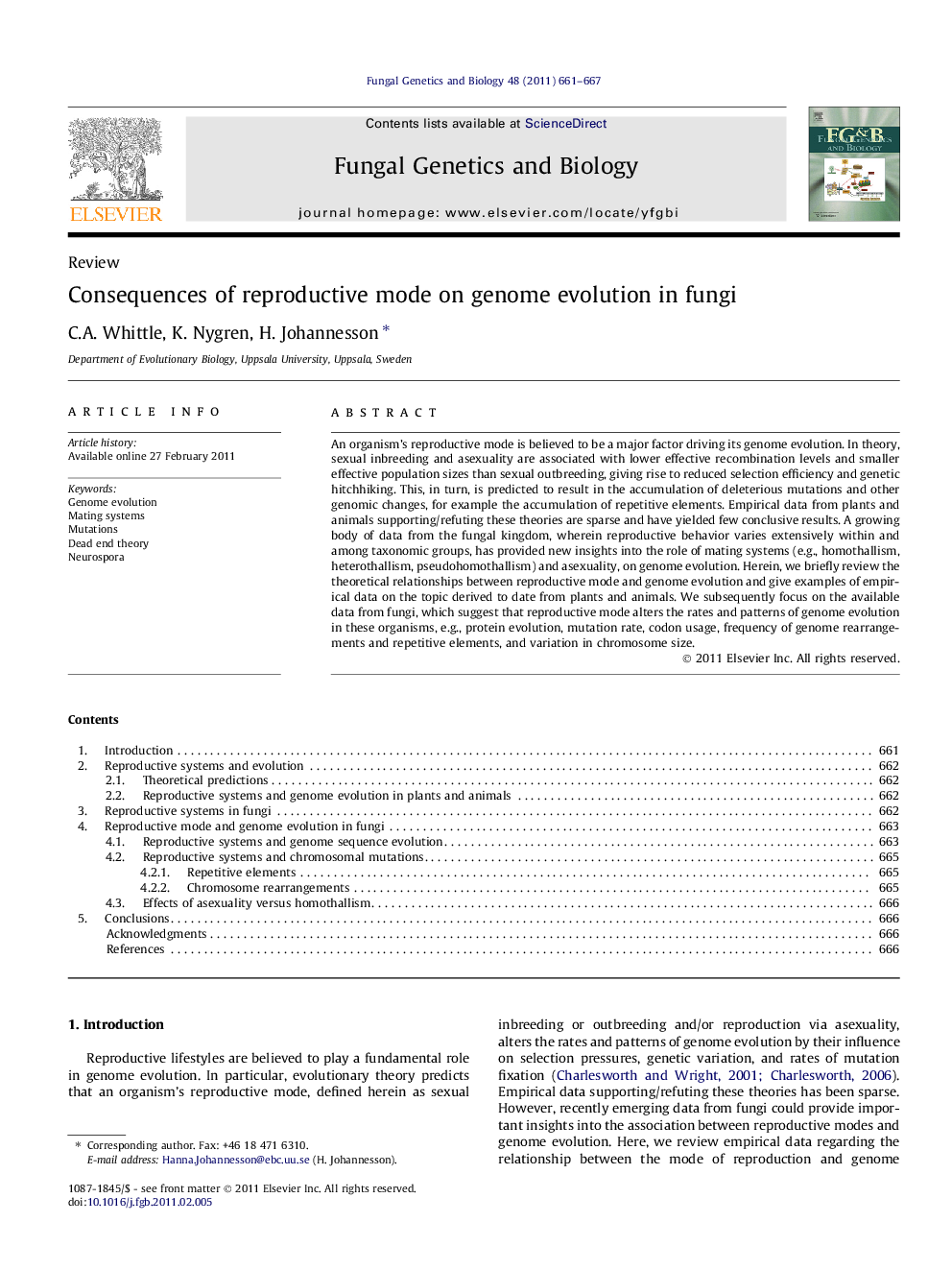| کد مقاله | کد نشریه | سال انتشار | مقاله انگلیسی | نسخه تمام متن |
|---|---|---|---|---|
| 2180977 | 1095255 | 2011 | 7 صفحه PDF | دانلود رایگان |

An organism’s reproductive mode is believed to be a major factor driving its genome evolution. In theory, sexual inbreeding and asexuality are associated with lower effective recombination levels and smaller effective population sizes than sexual outbreeding, giving rise to reduced selection efficiency and genetic hitchhiking. This, in turn, is predicted to result in the accumulation of deleterious mutations and other genomic changes, for example the accumulation of repetitive elements. Empirical data from plants and animals supporting/refuting these theories are sparse and have yielded few conclusive results. A growing body of data from the fungal kingdom, wherein reproductive behavior varies extensively within and among taxonomic groups, has provided new insights into the role of mating systems (e.g., homothallism, heterothallism, pseudohomothallism) and asexuality, on genome evolution. Herein, we briefly review the theoretical relationships between reproductive mode and genome evolution and give examples of empirical data on the topic derived to date from plants and animals. We subsequently focus on the available data from fungi, which suggest that reproductive mode alters the rates and patterns of genome evolution in these organisms, e.g., protein evolution, mutation rate, codon usage, frequency of genome rearrangements and repetitive elements, and variation in chromosome size.
Journal: Fungal Genetics and Biology - Volume 48, Issue 7, July 2011, Pages 661–667